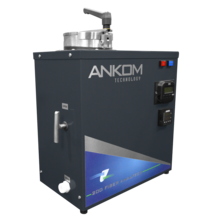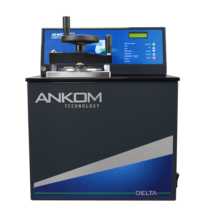
Crude & Detergent Fiber Analysis
Determining feed quality is important in developing a feed ration to support livestock and maintain the energy and health requirements set for the animal. Crude and detergent fiber analysis provide livestock farmers, feed producers, researchers, and regulatory bodies with the nutrient information they need.
There are three common analytical approaches to assessing fiber content in forage and feeds: Neutral Detergent Fiber (NDF), Acid Detergent Fiber (ADF), and Crude Fiber. While Crude Fiber analysis provides a broad fiber estimate, NDF and ADF (and subsequent Acid Detergent Lignin, ADL) analyses developed by Van Soest provide more detailed fiber values.
Neutral Detergent Fiber
Neutral Detergent Fiber is defined as the percentage of cell wall material in a feed or forage. NDF determinations measure the total fiber of the sample and solubilize all but hemicellulose, cellulose, and lignin (the indigestible materials).
Referred to as NDF in the mid to late twentieth century, amylase and sodium sulfite were added in the NDF analysis in the early 1990’s to further clean up residue and provide a more accurate representation of fiber in a sample. Alpha-amylase was added to help break down starch, while sodium sulfite helped remove protein. Thus, terminology changed to include “a” to the NDF acronym (aNDF).
ANKOM methods include α-amylase and sodium sulfite in our analysis to calculate aNDF content and is based on AOAC 2002.4. The ANKOM method compares well with the conventional method developed by industry expert, Dr. Peter Van Soest. This older method uses standard coarse fritted disk Gooch crucible (H.K. Goering & P.J. Van Soest – Agricultural Handbook #379 (1975)).
Acid Detergent Fiber
ADF is the percentage of highly indigestible plant material in a feed or forage. This insoluble fraction consists primarily of cellulose and lignin but can also include silica, tannins, glucans, fructans, cutins, and/or pectins. These ADF compounds remain in the filter bag after the sample has been digested with 0.5M H2SO4 to remove most simple carbohydrates, proteins, and fat. The lower the ADF value, the greater the digestibility of the feed. ANKOM’s ADF procedure is based on AOAC 973.18.
Crude Fiber
The Crude Fiber analysis measures a portion of cellulose (~50-80%), hemicellulose (~20%), lignin (10-50%), and some pectin (Van Soest, et al., 1973). Samples are digested in 0.255N H2SO4 and 0.313N NaOH to remove protein, sugar, starch, lipids, and portions of both the structural carbohydrates and lignin.
While crude fiber determinations do not define the full nutritional value for the animal, crude fiber is often a required analyses to express feed quality in the US.
Part #
Semi-Automated Crude & Detergent Fiber Performs AOCS Ba 6a-05 Crude Fiber, Acid Detergent Fiber, and Neutral Detergent Fiber analyses for all feeds and forages. The ANKOM 200 Fiber Analyzer has been subjected to rigorous testing over a broad range of...
Part #
Automated Crude & Detergent Fiber Analysis The ANKOM DELTA Fiber Analyzer automates fiber determinations at the highest level. Capable of Acid Detergent, Neutral Detergent, and Crude Fiber analysis (AOCS Ba 6a-05), the ANKOM DELTA includes an...

